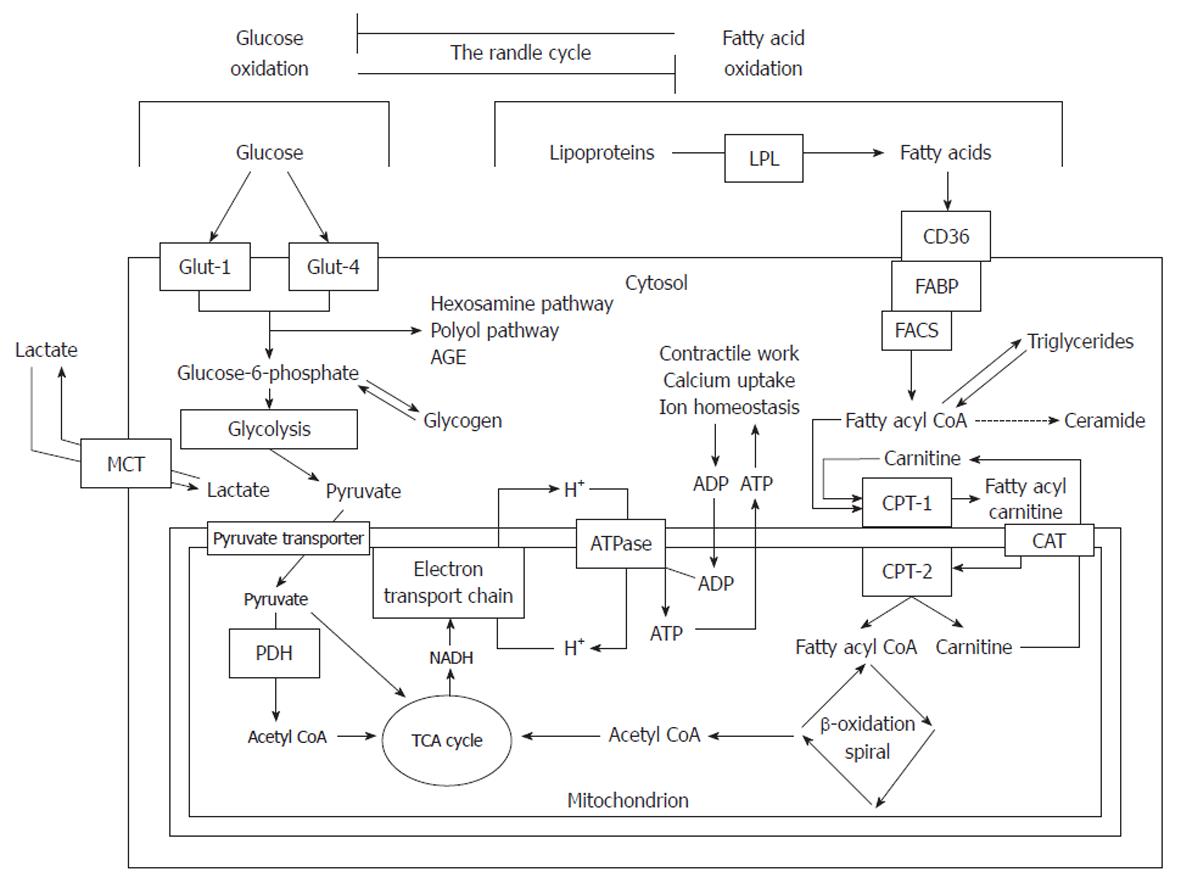Copyright
©2011 Baishideng Publishing Group Co.
World J Cardiol. Sep 26, 2011; 3(9): 281-302
Published online Sep 26, 2011. doi: 10.4330/wjc.v3.i9.281
Published online Sep 26, 2011. doi: 10.4330/wjc.v3.i9.281
Figure 1 Summary of fatty acid and glucose metabolism.
Glucose is taken up by Glut-1 and Glut-4 transporters and is converted by glycolysis to pyruvate which enters the mitochondria to be oxidized, producing acetyl coenzyme A (CoA). Fatty acids are liberated from lipoproteins by lipoprotein lipase (LPL) and taken up by fatty acid translocase (CD36) and fatty acid binding protein (FABP). Long-chain fatty acyl-CoA synthetase (LCAS) converts the fatty acid to a CoA ester which is then taken up by the carnitine shuttle system to the mitochondria. The fatty acyl CoA undergoes β-oxidation, removing two carbons per turn of the cycle and generating acetyl CoA. Acetyl CoA, generated by either pathway, enters the tricarboxylic acid (TCA) cycle to generate reducing equivalents [reduced nicotinamide adenide dinucleotide (NADH)]. These pass electrons to the electron transport chain which creates an electrochemical proton gradient to drive adenosine triphosphate (ATP) synthesis. ATP synthesis is coupled to the systems which create the ATP demand. FACS: Fatty acyl-CoA synthase; CPT: Carnitine palmitoyltransferase; CAT: Carnitine acyl transferase; AGE: Advanced glycosylation end-product; PDH: Pyruvate dehydrogenase; MCT: Monocarboxylate transporter; PDH: Pyruvate dehydrogenase; ADP: Adenosine monophosphate. Modified from: Sharma et al[29].
- Citation: Sharma V, McNeill JH. Parallel effects of β-adrenoceptor blockade on cardiac function and fatty acid oxidation in the diabetic heart: Confronting the maze. World J Cardiol 2011; 3(9): 281-302
- URL: https://www.wjgnet.com/1949-8462/full/v3/i9/281.htm
- DOI: https://dx.doi.org/10.4330/wjc.v3.i9.281









